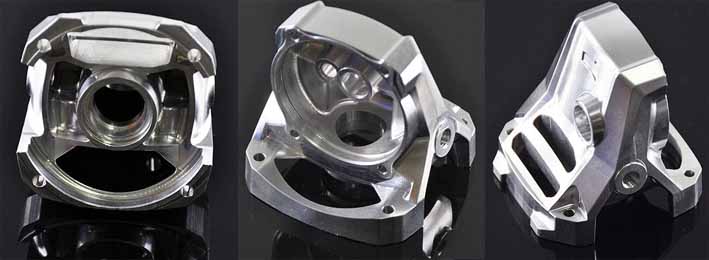فئات المنتجات
علامات المنتج
هيكل محمل من الألومنيوم لعمود التحكم المركزي
التصنيع باستخدام الحاسب الآلي: نموذج التشطيب باستخدام الحاسب الآلي
تنسيق البيانات: STP/IGS/X.T/PRO
فئة: التصنيع باستخدام الحاسب الآلي النموذجي
التصنيع باستخدام الحاسب الآلي: نموذج التشطيب باستخدام الحاسب الآلي
تنسيق البيانات: STP/IGS/X.T/PRO
فئة: التصنيع باستخدام الحاسب الآلي النموذجي
For a period of time, aluminum-lead (Al-Pb) alloys have been considered as ideal materials for engine crankshafts and bearings. It is now possible to use continuous casting and powder metallurgy processes to produce steel backed bearings. Al-Pb series alloys require special metallurgical processes. During the solidification of the alloy, only 1.5% of Pb is melted in Al at the temperature where the first solid phase appears. The remaining Pb is precipitated in the form of droplets, and the alloy around the droplets is still molten. Due to the density difference, these droplets segregate, and the application of ordinary casting methods cannot obtain a uniform distribution of Pb on the entire aluminum substrate.
The part of the shaft supported by the rolling bearing plate is called the bearing bush, and the parts that match the journal are called the bearing bush. In order to improve the friction characteristics of the bearing shell surface layer, the anti-friction raw material layer cast on the inner surface layer is called a rolling bearing lining. The raw materials of bearing bushes and rolling bearing linings are generally called rolling bearing raw materials. Common rolling bearing raw materials are: Bearing alloy (also known as Babbitt alloy or white aluminum alloy), wear-resistant cast iron, copper-based and aluminum-based alloys, powder metallurgy materials, plastics, vulcanized rubber, mahogany and carbon-high purity graphite, ptfe (بتف), modified material poly Formaldehyde (بوم) وما إلى ذلك وهلم جرا.

CNC finishing of aluminum bearing bush
اتصل بنا
في انتظار لبريدك الالكتروني, سوف نقوم بالرد عليك في غضون 12 ساعات مع المعلومات القيمة التي تحتاجها.
 English
English العربية
العربية 中文(漢字)
中文(漢字) Čeština
Čeština Dansk
Dansk Nederlands
Nederlands Suomi
Suomi Français
Français Deutsch
Deutsch Italiano
Italiano 日本語
日本語 ಕನ್ನಡ
ಕನ್ನಡ 한국어
한국어 Português
Português Русский
Русский Slovenčina
Slovenčina Español
Español Svenska
Svenska Türkçe
Türkçe


